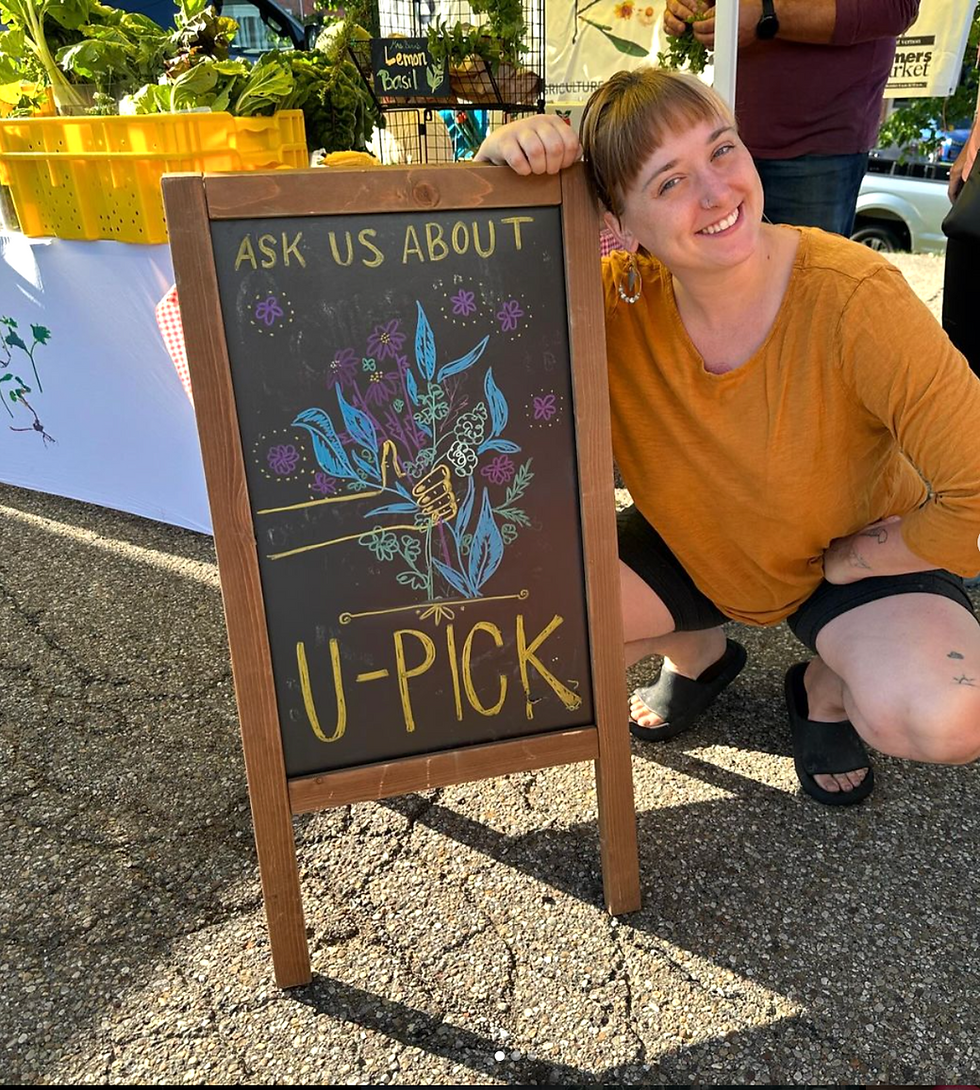2 Endangered Species You Can Save TODAY
- Community Roots

- Aug 14, 2024
- 2 min read
Angely here! 🌿 Not only can we help local pollinators but we can always focus our efforts to save pollinators who are endangered right in our backyards or in a container!
The Aphrodite Fritillary butterfly and Unexpected Cycnia moth are two species listed as endangered in Ohio. They depend on native violets such as the Common Blue Violet (Viola sororia) and Milkweeds (so many to choose from!). Milkweeds also attract and help Monarchs!🦋
Start saving the world in your backyard by letting those violets take over your grass! I have also started growing them in containers as an experiment!
Native violets, particularly those belonging to the *Viola* genus, are charming plants with some fascinating traits.
Here are some interesting facts about them:
1. **Global Distribution**: The *Viola* genus is incredibly diverse, with around 550 to 600 species found across various continents. Native violets can be found in temperate regions of North and South America, Europe, Asia, and parts of Australia.
2. **Edible and Medicinal Uses**: Many species of violets are edible and have been used in traditional medicine. The leaves and flowers of some species are rich in vitamins A and C. They have been used historically to treat ailments like headaches, colds, and sore throats.
3. **Symbolism**: Violets have a rich symbolic history. In many cultures, they represent modesty, humility, and faithfulness. They were also used as symbols of love, often included in romantic bouquets.
4. **Adaptability**: Native violets are highly adaptable and can grow in a variety of habitats, from woodlands and meadows to alpine regions. Some species are even known to thrive in urban environments, making them a popular choice for ground cover in gardens.
5. **Reproduction**: Violets have a unique reproduction strategy. They produce two types of flowers: the familiar, showy flowers that rely on insects for pollination and another type called cleistogamous flowers. These are small, closed flowers that self-pollinate, ensuring the plant can reproduce even if pollinators are scarce.
6. **Attracting Wildlife**: Native violets are valuable to wildlife. They are a food source for various butterfly larvae, particularly the fritillary butterfly, whose caterpillars feed on the leaves of violets. The flowers also attract bees and other pollinators.
7. **Cultural Significance**: In Australia, the native violet (*Viola hederacea*) is popular for its delicate appearance and is often used in indigenous landscaping. It has cultural significance for some Aboriginal communities, who have used the plant for medicinal purposes.
8. **Perennial Nature**: Most native violets are perennials, meaning they live for more than two years. They spread through runners, making them an excellent choice for ground cover in shaded areas.
9. **Color Variations**: While violets are typically known for their purple or blue flowers, the genus *Viola* includes species with a range of colors, including white, yellow, and even bi-colored varieties.
10. **Invasive Potential**: Some native violets, particularly in non-native regions, can become invasive due to their aggressive spreading nature. They can quickly take over garden beds and lawns if not managed properly. Sometimes the balance between man and nature out here in Knox County can be tilted towards nature! You can always pot up some if you have to thin populations in garden beds!
#beefriendlygarden #nativegardening #nativeplanting #pollinatorfriendly #pollinatorgarden #pollinatorplants #nativeohioplants #nativebees #plantforwildlife





Comments